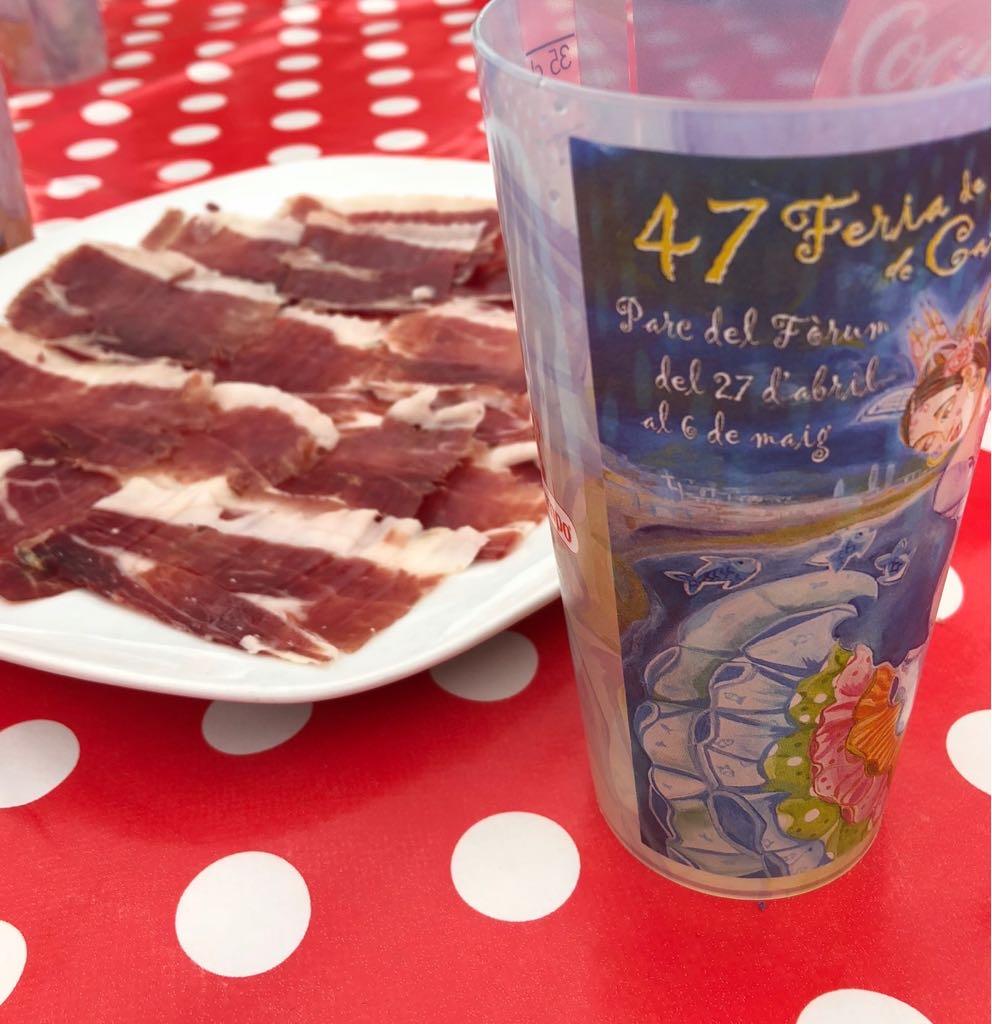Feria de Abril: travelling to Andalusia without leaving Barcelona
The cultural festival played host to more than one million visitors

The Feria de Abril of Barcelona is a great festivity that takes place every year in the city with the aim of welcoming the spring. Although it is true that its origins are quite far from the Catalan capital, specifically in the city of Seville (Andalusia), the bonds that unite Catalonia with the Feria de Abril are very close: in 1846, a Basque and a Catalan proposed this festival to the city of Seville and just one year later, the first Feria de Abril was organized in Spain. During the second half of the 20th century, many Andalusians migrated towards Catalonia, attracted by the labor opportunities that were produced by the increase of the industrial sector in the country. It has been celebrated annually since 1971 in three different towns: Castelldefels, Barberà del Vallès and Santa Coloma de Gramenet. These are places where, by the beginnings of the festival, were receiving more Andalusian immigrants who were looking for a job. Since then, the festivity has been growing with more activities and visitors over the years, and this is the reason why it is still being held in Barcelona.
The Feria de Abril takes place after Easter and lasts for ten days. Some years, it extends until the beginning of May. As in the "original" Feria de Abril in Seville, the celebrations begin with the traditional lighting of the entrance gate.
As a festival of Andalusian tradition, the Federation of Andalusian Cultural Entities in Catalonia (FECAC) is in charge of the organization of the event, as well as a large part of the activities that take place. When the FECAC presented this year’s edition, its president, Daniel Salinero, ensured that it was going to be the most Andalusian ever. Since 1988 the FECAC has been connected to the Junta de Andalucía, the Andalusian regional government.
Salinero also said that this edition was going to be the best of the last ten years. Expectations were high this year, and the event closed with moret than one million visitors. Susana Salvador, the founder and director of a flamenco dancing school from Mataró, says that two years ago they thought of closing it down, but fortunately they chose not to and today it’s becoming more and more popular.

Nowadays, the Feria de Abril is held in the enclosure of Parc del Fòrum, next to Sant Adrià de Besòs. It took up a total of 87,000 square metres. This year a rollercoaster was the novelty.
“El Real” is the biggest sector: the streets, decorated with lights or the typical Andalusian lanterns, gather the stands from the entities and the restaurants. The atmosphere was very similar to the Feria de Abril of Seville: the smell of grilled meat filled the streets and the grills offered plenty of Spanish food while flamenco or sevillanas play.
As in Seville, regional costumes were essential, so the most daring visitors wore their full dresses. In Barcelona only women dress as “flamencas”; men usually wear casual outdoor clothes. Apart from this and the absence of horse-drawn carriages, there is another difference between “El Real” in Andalusia and in Catalonia: here, there are little stalls which sell sweets, dried fruit, pickles or typical Andalusian desserts. Next to them, flowers, flamenco dresses and skirts, fans, combs, leather bags, bracelets or T-shirts can also be bought.
The multiple options offered in the Catalan Feria de Abril makes it a popular celebration in Barcelona and is nowadays the most multitudinous in Catalonia with regard to Spanish culture. In fact, Susana Salvador, also the former director of the FECAC official ballet, says that the Catalan Feria de Abril is one of the most important in the country.

Carmen Roldán, from Santa Coloma and who has frequented the Feria since its beginnings, keeps enjoying her annual visit. “I’m getting older, but I still like to put on my dress and come with my friends. If I can, I come more than one day”, she says. The same goes for Paqui Martín, who says that since her grandson became an adult she goes every single year no matter where that edition is held. “ I wouldn’t miss it for the world. It reminds me of my home land and the people I grew up with. It’s a piece of Andalusia in Catalonia”, she claims.
Eating in the Feria
Throughout the space occupied by the fair, you could find many food stalls with a wide variety of typical Andalusian dishes that will makes it hard to choose what you want to eat. And of course, you couldn’t go without trying the traditional alcoholic drink "rebujito andaluz", which is based on a specific type of wine called “manzanilla”, soda (Sprite or SevenUp), ice and peppermint leaves.
While walking around the Fair, the grills that overflow with meat, sausages, vegetables and “pescaíto frito”, the fried fish typical from the south of Spain, accompany the ride. Apart from that, all kind of “tapas” were on offer. If you walk around, most of the big stands which are cooking meat offer free tastings: you can taste a bit of paella, patatas bravas (spicy potatoes) or ham. But don’t be fooled: if the assistants decide to stay there to have lunch, the price is far from free. Four refreshments and a plate of ham is, on average, 25€. Of that total, 4€ are the plastic cups, which are sold on all stands for 1€. This initiative has been continued from last year, when the FECAC started it to take care of the environment. The aim is to reduce the use of plastic, especially when they are used only once. Consumers can take them home as a souvenir or return them and get their money back.